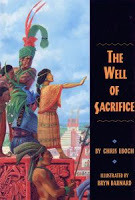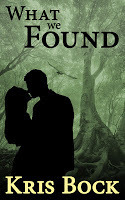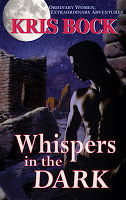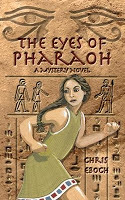How to Write Vivid Scenes part 2
Last week I talked about how to write vivid scenes by focusing on action and dialogue (not summary) and by including conflict. Now let's explore how to link those scenes for the best dramatic impact.
Connecting Scenes
Each scene is a mini-story, with its own climax. Each scene should lead to the next and drive the story forward, so all scenes connect and ultimately drive toward the final story climax.
 A work of fiction has one big story question—essentially, will this main character achieve his or her goal? For example, in my children’s historical fiction novel
The Eyes of Pharaoh
, the main character hunts for her missing friend. The story question is, “Will Seshta find Reya?” In
The Well of Sacrifice
, the story question is, “Will Eveningstar be able to save her city and herself from the evil high priest?”
A work of fiction has one big story question—essentially, will this main character achieve his or her goal? For example, in my children’s historical fiction novel
The Eyes of Pharaoh
, the main character hunts for her missing friend. The story question is, “Will Seshta find Reya?” In
The Well of Sacrifice
, the story question is, “Will Eveningstar be able to save her city and herself from the evil high priest?”In Rattled (written as Kris Bock), the big story question is, “Will Erin find the treasure before the bad guys do?” There may also be secondary questions, such as, “Will Erin find love with the sexy helicopter pilot?” but one main question drives the plot.
Throughout the work of fiction, the main character works toward that story goal during a series of scenes, each of which has a shorter-term scene goal. For example, in Erin’s attempt to find the treasure, she and her best friend Camie must get out to the desert without the bad guys following; they must find a petroglyph map; and they must locate the cave.
You should be able to express each scene goal as a clear, specific question, such as, “Will Erin and Camie get out of town without being followed?” If you can’t figure out your main character’s goal in a scene, you may have an unnecessary scene or a character who is behaving in an unnatural way.
Yes, No, Maybe
Scene questions can be answered in four ways: Yes, No, Yes but…, and No and furthermore….
 If the answer is “Yes,” then the character has achieved his or her scene goal and you have a happy character. That’s fine if we already know that the character has more challenges ahead, but you should still end the chapter with the character looking toward the next goal, to maintain tension and reader interest. For example, in my mystery/suspense novel
What We Found
(written as Kris Bock), one chapter ends when the heroine has successfully fought back against someone who was harassing her. But she realizes that the person is probably not the murderer, so a killer is still out there.
If the answer is “Yes,” then the character has achieved his or her scene goal and you have a happy character. That’s fine if we already know that the character has more challenges ahead, but you should still end the chapter with the character looking toward the next goal, to maintain tension and reader interest. For example, in my mystery/suspense novel
What We Found
(written as Kris Bock), one chapter ends when the heroine has successfully fought back against someone who was harassing her. But she realizes that the person is probably not the murderer, so a killer is still out there.Truly happy scene endings usually don’t have much conflict, so save that for the last scene.
If the answer to the scene question is “No,” then the character has to try something else to achieve that goal. That provides conflict, but it’s essentially the same conflict you already had. Too many examples of the character trying and failing to achieve the same goal, with no change, will get dull.
An answer of “Yes, but…” provides a twist to increase tension. Maybe a character can get what she wants, but with strings attached. This forces the character to choose between two things important to her or to make a moral choice, a great source of conflict. Or maybe she achieves her goal but it turns out to make things worse or add new complications. For example, in Rattled , the bad guys show up in the desert while Erin and Camie are looking for the lost treasure cave. The scene question becomes, “Will Erin escape?” This is answered with, “Yes, but they’ve captured Camie,” which leads to a new set of problems.
 “No, and furthermore…” is another strong option because it adds additional hurdles—time is running out or your character has a new obstacle. It makes the situation worse, which creates even greater conflict. In
Whispers in the Dark
(written as Kris Bock), one scene question is, “Will Kylie be able to notify the police in time to stop the criminals from escaping?” When this is answered with, “No, and furthermore they come back and capture her,” the stakes are increased dramatically.
“No, and furthermore…” is another strong option because it adds additional hurdles—time is running out or your character has a new obstacle. It makes the situation worse, which creates even greater conflict. In
Whispers in the Dark
(written as Kris Bock), one scene question is, “Will Kylie be able to notify the police in time to stop the criminals from escaping?” When this is answered with, “No, and furthermore they come back and capture her,” the stakes are increased dramatically.One way or another, the scene should end with a clear answer to the original question. Ideally that answer makes things worse. The next scene should open with a new specific scene goal (or occasionally the same one repeated) and probably a review of the main story goal. Here’s an example from The Eyes of Pharaoh :
 Scene question: “Will Seshta find Reya at the army barracks?” Answer: “No, and furthermore, she thinks the general lied to her, so Reya may be in danger.” Next scene: “Can Seshta spy on the general to find out the truth, which may lead her to Reya?”
Scene question: “Will Seshta find Reya at the army barracks?” Answer: “No, and furthermore, she thinks the general lied to her, so Reya may be in danger.” Next scene: “Can Seshta spy on the general to find out the truth, which may lead her to Reya?”Over the course of a novel, each end-of-scene failure should get the main character into worse trouble, leading to a dramatic final struggle.
Next week: Using Cause and Effect
In Advanced Plotting , you’ll get two dozen essays like this one on the craft of writing, plus a detailed explanation of the Plot Outline Exercise, a powerful tool to identify and fix plot weaknesses in your manuscripts. Buy Advanced Plotting
 for $9.99 in paperback or as a $4.99 e-book on Amazon or Barnes & Noble, or in various e-book formats from Smashwords.
for $9.99 in paperback or as a $4.99 e-book on Amazon or Barnes & Noble, or in various e-book formats from Smashwords.
Published on October 19, 2012 04:00
No comments have been added yet.



